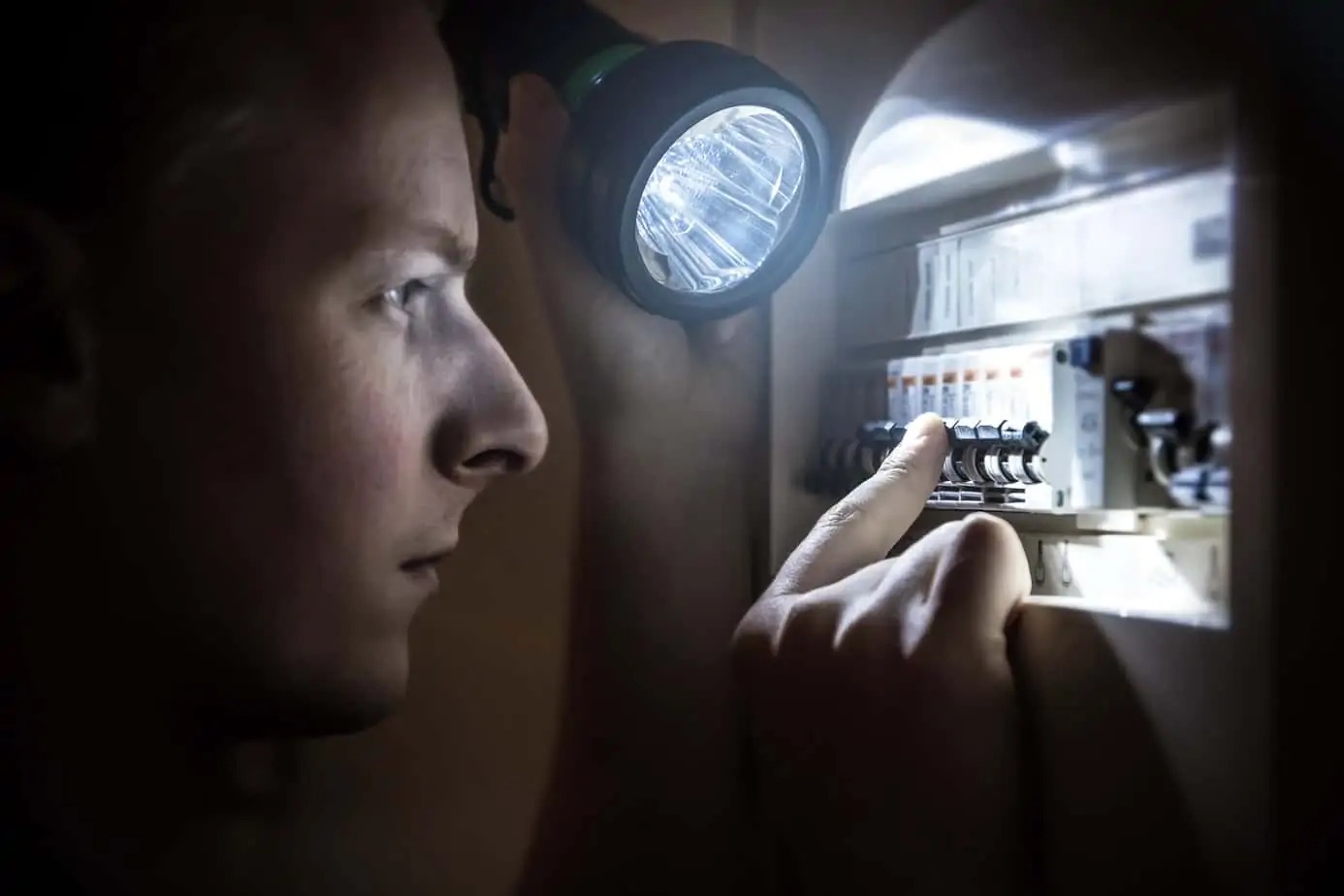

Articles
Lights Flicker When AC Turns On
Modified: March 2, 2024
Looking for articles about why lights flicker when the AC turns on? Explore our informative content that explains this common electrical issue and offers solutions to fix it.
(Many of the links in this article redirect to a specific reviewed product. Your purchase of these products through affiliate links helps to generate commission for Storables.com, at no extra cost. Learn more)
Introduction
Have you ever noticed that the lights in your home flicker when you turn on your air conditioning? It’s a common problem that many homeowners face, but it can be quite frustrating. Not only does it affect the lighting in your home, but it also raises concerns about the overall electrical system. Understanding the cause behind this issue and knowing how to fix it can help you maintain a hassle-free and efficient home environment.
When the lights flicker as soon as the air conditioning (AC) unit kicks in, it indicates an underlying problem within the electrical system. Identifying the root cause is crucial to address any potential safety hazards and prevent further damage.
In this article, we will explore the common causes of lights flickering when the AC turns on and provide you with practical solutions to fix the issue. Whether you’re experiencing this problem for the first time or it’s been ongoing for a while, this guide will help you understand what’s happening and how to resolve it.
Key Takeaways:
- Address electrical overload by redistributing the load and consulting a licensed electrician to ensure a safe and efficient electrical system, preventing flickering lights when the AC turns on.
- Tighten electrical connections, consider installing voltage stabilizers, and upgrade aging electrical components to fix flickering lights when the AC activates, ensuring a stable and reliable power supply.
Read more: Light Bulb Is Flickering When Turned On
Causes of Lights Flickering When AC Turns On
Lights flickering when the AC turns on can be attributed to various factors. Let’s take a closer look at some of the common causes:
- Electrical Overload: When the AC unit starts, it draws a significant amount of power. If the electrical circuit supplying power to the AC unit is already overloaded with other appliances and lights, it can lead to voltage drops, causing the lights to flicker.
- Loose Electrical Connections: Over time, electrical connections can become loose due to vibrations and changes in temperature. Loose connections can create resistance in the electrical circuit, leading to voltage fluctuations that cause the lights to flicker.
- Voltage Fluctuations: Fluctuations in the voltage supplied to your home can cause the lights to flicker. These fluctuations can occur due to external factors such as power grid issues or internal issues within your home’s electrical system.
- Faulty Wiring: Faulty or damaged wiring can cause intermittent power supply, leading to lights flickering when the AC turns on. It can be a result of poor installation, aging wires, or damage from pests or environmental factors.
- Aging Electrical Components: Electrical components, such as switches and sockets, can deteriorate over time, leading to poor connections and voltage fluctuations. This can cause the lights to flicker when there is a sudden increase in power demand from the AC unit.
It’s important to note that flickering lights might not always be a cause for immediate concern. In some cases, it might be a minor issue that can be easily resolved. However, if the flickering is persistent, severe, or accompanied by other electrical problems, it’s advisable to seek professional assistance to ensure the safety of your electrical system.
Electrical Overload
Electrical overload is a common cause of lights flickering when the AC turns on. When the air conditioning unit starts, it requires a significant amount of power to run. If the circuit supplying power to the AC unit is already carrying a heavy load from other appliances and lights, it can lead to voltage drops and fluctuations.
An overloaded circuit occurs when the total electrical demand exceeds the capacity of the circuit. This can happen when multiple high-power devices, such as refrigerators, washing machines, or heaters, are running simultaneously. When the AC turns on and adds to the load, it puts additional strain on the circuit, causing voltage drops.
When an electrical circuit is overloaded, the voltage supplied to the lights may decrease, causing them to flicker. The flickering can be more noticeable if the lights are connected to the same circuit as the AC unit. This is because the AC unit draws a larger amount of power, leading to a greater voltage drop.
To prevent electrical overload and reduce the chances of lights flickering when the AC turns on, it’s important to distribute the electrical load evenly across different circuits. You can do this by identifying the outlets and appliances connected to each circuit and being mindful of the power requirements of each device.
If you frequently experience lights flickering due to electrical overload, consider hiring a licensed electrician to assess your electrical system and determine if additional circuits or upgrades are needed. They can help redistribute the load and ensure that your electrical system can handle the power demands of all your appliances, including the AC unit.
Remember, electrical overload poses a safety risk as it can lead to circuit overheating and potential electrical fires. It’s essential to address this issue promptly to avoid any hazards and ensure the proper functioning of your electrical system.
Loose Electrical Connections
Loose electrical connections are another common cause of lights flickering when the AC turns on. Over time, electrical connections can become loose due to vibrations, changes in temperature, or simply wear and tear. When electrical connections become loose, they create resistance in the circuit, leading to voltage fluctuations and flickering lights.
To understand how loose connections can cause flickering lights, it’s important to know how electricity flows. Electricity follows the path of least resistance. When there is a loose connection, the flow of electricity encounters increased resistance, causing the voltage to drop momentarily. This fluctuation in voltage results in the lights flickering on and off.
Loose electrical connections can occur at various points within the electrical system, including electrical outlets, switches, and junction boxes. If you notice that the lights only flicker when the AC turns on, it’s likely that the loose connection is in the circuit supplying power to the AC unit.
Fixing loose electrical connections is crucial not only to prevent lights flickering but also to ensure the safety and efficiency of your electrical system. Here are a few steps you can take to address this issue:
- Turn off the power: Before inspecting or working on any electrical connections, turn off the power to the affected circuit at the main electrical panel. This will help prevent any chance of electric shock.
- Check the connections: Carefully inspect the electrical connections in the circuit. Look for any signs of looseness, such as visible gaps or wires not securely connected.
- Tighten the connections: Using a screwdriver or pliers, tighten any loose connections. Remember to use the appropriate tools and techniques to avoid damaging the electrical components.
- Consider professional help: If you’re unsure about how to safely tighten the connections or if the flickering persists after tightening, it’s advisable to seek assistance from a licensed electrician. They have the knowledge and expertise to troubleshoot and properly fix loose electrical connections.
Addressing loose electrical connections not only resolves the issue of lights flickering when the AC turns on but also promotes a safer electrical environment. Regular inspections and maintenance of your electrical system can help prevent loose connections from occurring in the future.
Voltage Fluctuations
Voltage fluctuations can be another culprit behind lights flickering when the AC turns on. Voltage refers to the amount of electrical potential difference between two points in an electrical circuit. Fluctuations in voltage can occur due to various factors, both internal and external to your home’s electrical system.
External factors that can cause voltage fluctuations include issues in the power grid, such as fluctuations in the supply from the utility company. These fluctuations can be caused by equipment malfunctions, weather conditions, or high demand on the power grid. When the AC unit turns on and draws a significant amount of power, it can exacerbate the voltage fluctuations, leading to lights flickering.
Internal factors within your home’s electrical system can also contribute to voltage fluctuations. These factors may include overloaded circuits, faulty wiring, loose connections, or even aging electrical components. Any inconsistencies in the flow of electricity can result in fluctuations in voltage, causing the lights to flicker.
In some cases, voltage fluctuations may only cause a temporary flickering of the lights, while in others, it may be more persistent and severe. If you notice that the lights flicker not only when the AC turns on but also during other times, it may indicate a deeper problem with the voltage stability in your electrical system.
To address voltage fluctuations and minimize the chances of lights flickering, one solution is to install a voltage stabilizer or surge protector. A voltage stabilizer helps regulate the voltage supplied to your home, ensuring a steady and stable flow of electricity. This can prevent sudden drops or surges in voltage, reducing the likelihood of lights flickering.
If you suspect that voltage fluctuations are causing the lights to flicker, it’s recommended to consult with a licensed electrician. They can assess your electrical system and determine the most appropriate solution for your specific situation. They may recommend installing a voltage stabilizer, conducting electrical upgrades, or performing repairs to address any underlying issues.
By addressing voltage fluctuations, you can not only resolve the problem of lights flickering when the AC turns on but also enhance the overall stability and reliability of your electrical system.
Read more: Lights Flicker When Space Heater Turns On
Faulty Wiring
Faulty wiring is a common cause of lights flickering when the AC turns on. Wiring refers to the electrical conductors that distribute power throughout your home. Over time, wiring can become damaged or develop issues that disrupt the flow of electricity, leading to flickering lights.
There are several reasons why faulty wiring can cause lights to flicker when the AC unit is turned on:
- Poor installation: If the electrical wiring in your home was not properly installed or if shortcuts were taken during the installation process, it can lead to loose connections or inadequate wiring which can cause voltage fluctuations.
- Aging wires: Over time, the insulation around electrical wires can deteriorate, exposing the conductors. This can result in short circuits or arcing, both of which can cause lights to flicker when the AC turns on.
- Pest or environmental damage: Rodents, insects, or environmental factors such as moisture or corrosion can damage electrical wiring. This damage can disrupt the flow of electricity and lead to flickering lights.
- Incompatible wiring: If the wiring in your home is not compatible with the electrical demand of your AC unit, it can cause voltage fluctuations. This can be a result of undersized or underspecified wiring that cannot handle the power requirements of the AC unit.
Addressing faulty wiring is crucial to ensure the safety and functionality of your electrical system. Here are a few steps to consider:
- Consult a professional: If you suspect faulty wiring in your home, it’s best to consult a licensed electrician. They have the expertise and knowledge to identify and address wiring issues safely and effectively.
- Inspection and testing: An electrician will conduct a thorough inspection of your electrical system, including the wiring. They may use specialized tools and equipment to test the integrity and conductivity of the wires.
- Repair or replacement: Based on their assessment, the electrician will recommend appropriate repairs or replacements for any faulty wiring. This may involve re-securing loose connections, replacing damaged wires, or upgrading incompatible wiring.
- Ongoing maintenance: Regular maintenance of your electrical system, including inspections and addressing any issues promptly, is essential to prevent future problems with faulty wiring.
By addressing faulty wiring, you not only eliminate the issue of lights flickering when the AC turns on but also enhance the safety and efficiency of your electrical system.
Aging Electrical Components
Aging electrical components can be a significant factor behind lights flickering when the AC turns on. Over time, electrical components such as switches, outlets, and electrical panels can wear out, leading to poor connections and voltage fluctuations.
As electrical components age, their performance can deteriorate. This can result in increased resistance in the electrical circuit, causing voltage drops when the AC unit starts up. The flickering of lights is a clear indication of these voltage fluctuations.
Additionally, aging electrical components may not be able to handle the sudden increase in power demand that occurs when the AC unit turns on. This can further contribute to voltage drops and flickering lights.
To address the issue of lights flickering due to aging electrical components, it is important to consider the following steps:
- Inspection: Regularly inspect your electrical components for signs of wear and tear. Look for any discoloration, sparking, or loose connections.
- Replace worn out components: If you notice any signs of aging or damage in your electrical components, such as switches or outlets, consider replacing them. Upgrading to newer, more reliable components can help prevent voltage fluctuations and flickering lights.
- Upgrade your electrical panel: If your electrical panel is old or outdated, it may be struggling to handle the power demand of modern appliances, including the AC unit. Upgrading to a larger capacity panel can provide a more stable and reliable electrical supply.
- Consider professional assessment: If you’re unsure about the condition of your electrical components or if the flickering lights persist after replacing components, it is advisable to consult with a licensed electrician. They can perform a thorough assessment of your electrical system and provide recommendations tailored to your specific situation.
- Regular maintenance: Ongoing maintenance, such as cleaning and tightening connections, is essential to prolong the lifespan of your electrical components and ensure their optimal performance.
By addressing aging electrical components, you can alleviate the issue of lights flickering when the AC turns on and maintain a safe and efficient electrical system in your home.
Check the electrical connections and ensure they are tight. Loose connections can cause lights to flicker when the AC turns on. If you are not comfortable doing this yourself, contact a qualified electrician for assistance.
How to Fix Lights Flickering When AC Turns On
Experiencing lights flickering when the AC turns on can be frustrating, but fortunately, there are several steps you can take to fix this issue. Here are some solutions to consider:
- Check the Electrical Load: Begin by assessing the electrical load in your home. Check if the circuit supplying power to the AC unit is overloaded with other appliances and lights. If so, redistribute the load by unplugging unnecessary devices or connecting them to different circuits. This helps prevent voltage drops and flickering lights caused by electrical overload.
- Tighten Electrical Connections: Inspect all electrical connections, including outlets, switches, and junction boxes. Tighten any loose connections using the appropriate tools. Loose connections can create resistance in the circuit, leading to voltage fluctuations and flickering lights when the AC turns on.
- Install Voltage Stabilizer or Surge Protector: Consider installing a voltage stabilizer or surge protector in your electrical system. These devices regulate the voltage supplied to your home, protecting your appliances and preventing voltage fluctuations. This can reduce the chances of lights flickering when the AC unit is activated.
- Assess and Repair Faulty Wiring: If you suspect faulty or damaged wiring in your home, it’s essential to address this issue. Hiring a licensed electrician to conduct a thorough inspection and perform necessary repairs or replacements can help resolve wiring-related problems. Properly functioning wiring ensures a steady flow of electricity, minimizing voltage drops and flickering lights.
- Upgrade Electrical Components: Consider upgrading aging electrical components, such as switches, outlets, and electrical panels. Older components may have deteriorated over time, leading to poor connections and voltage fluctuations. Upgrading to newer, more reliable components can ensure a more stable electrical supply and reduce the occurrence of lights flickering.
It’s important to note that electrical work can be complex and potentially hazardous. If you are uncertain or uncomfortable performing any of the above tasks, it’s best to seek professional assistance from a licensed electrician. They have the necessary expertise to identify and resolve electrical issues safely and effectively.
By following these steps and addressing the underlying causes of lights flickering when the AC turns on, you can create a more stable and reliable electrical system in your home. This will enhance your comfort and peace of mind while ensuring the efficient operation of your air conditioning unit.
Check the Electrical Load
When lights flicker as soon as the AC turns on, one of the possible causes is an overloaded electrical circuit. An overloaded circuit occurs when the total electrical demand exceeds the circuit’s capacity to handle it. This situation commonly arises when multiple high-power devices and appliances are operating simultaneously, such as refrigerators, washing machines, heaters, and other electronics.
To determine if an overloaded electrical circuit is the cause of the lights flickering when the AC turns on, you can follow these steps:
- Identify the circuit: Find out which circuit supplies power to both the AC unit and the lights that are flickering. This can usually be done by checking the breaker panel and identifying the breaker switch controlling the circuit in question.
- Assess the electrical load: Take note of all the electrical devices and appliances connected to that particular circuit. This includes not only the AC unit but also other electronics, lights, and appliances that are sharing the same circuit. Consider the power requirements of each device. Appliances with high power demands, such as refrigerators or electric heaters, can significantly contribute to an overloaded circuit.
- Distribute the load: If you find that the electrical load is too much for the circuit to handle, you will need to redistribute the load. Determine which devices and appliances can be connected to a different circuit. Unplug unnecessary devices or relocate them to other outlets connected to separate circuits.
- Consider separate circuit installation: In some cases, the existing circuits in your home might not have the capacity to handle the combined load of the AC unit and other devices. In such situations, you may need to consult with a licensed electrician to assess your electrical system and consider installing a separate circuit dedicated to the AC unit.
Properly distributing the electrical load across multiple circuits can alleviate the strain on the overloaded circuit and minimize voltage drops, which can result in lights flickering when the AC turns on. By taking these preventive measures, you can maintain a stable and efficient electrical system in your home, ensuring that both your AC unit and other electrical devices operate smoothly.
Read more: Ceiling Light Flickers When Turned Off
Tighten Electrical Connections
One of the causes of lights flickering when the AC turns on is loose electrical connections. Over time, vibrations, temperature changes, and general wear and tear can cause electrical connections to become loose. Loose connections can disrupt the flow of electricity, leading to voltage fluctuations and flickering lights.
To fix lights flickering due to loose electrical connections, follow these steps:
- Safety first: Before handling any electrical connections, ensure that the power is turned off at the main electrical panel to prevent the risk of electric shock.
- Inspect the connections: Carefully examine all electrical connections on the circuit that is causing the lights to flicker. This includes outlets, switches, and junction boxes. Look for any signs of loose or visibly disconnected wires.
- Tighten the connections: Using a suitable screwdriver or pliers, gently tighten the screws or terminals of the loose connections. Ensure that the wires are securely fastened and that there is no visible gap or movement.
- Double-check: Once you have tightened the connections, double-check that they are secure and that there is no movement or visible gap. Loose connections can lead to poor electrical contact, which can result in flickering lights.
- Seek professional help: If you are unsure about how to handle or fix loose electrical connections, or if the problem persists after tightening, it is advisable to seek assistance from a licensed electrician. They have the expertise and tools necessary to troubleshoot and fix loose connections safely and effectively.
Tightening electrical connections not only resolves the issue of lights flickering when the AC turns on but also ensures the safety and reliability of your electrical system. Loose connections can cause overheating and pose a fire hazard, so it is crucial to address this problem promptly.
Regularly inspecting and maintaining the electrical connections in your home can help prevent loose connections in the future. By taking the necessary steps to tighten electrical connections and ensuring their proper functioning, you can enjoy a stable and uninterrupted power supply without the nuisance of flickering lights.
Install Voltage Stabilizer or Surge Protector
Installing a voltage stabilizer or surge protector can help prevent lights from flickering when the AC turns on, especially in areas where voltage fluctuations are common. These devices are designed to regulate and protect electrical appliances and circuits from sudden voltage spikes or drops.
Here’s how a voltage stabilizer or surge protector can help fix the issue:
- Voltage Stabilizer: A voltage stabilizer is designed to automatically maintain a steady voltage supply to your home. It monitors the incoming voltage and adjusts it as necessary to provide a stable and constant voltage output. By keeping the voltage within a safe range, a voltage stabilizer prevents voltage fluctuations that can cause lights to flicker when the AC unit starts.
- Surge Protector: A surge protector is designed to protect electrical devices from voltage spikes or power surges. These devices have built-in circuitry that detects and diverts excess voltage away from sensitive electronics. By using a surge protector, you can safeguard your appliances, including lights, from sudden voltage surges that could cause them to flicker or even damage them.
When considering the installation of a voltage stabilizer or surge protector, keep the following points in mind:
- Consult a professional: It is advisable to consult with a licensed electrician to determine the appropriate type and capacity of the voltage stabilizer or surge protector for your specific electrical needs.
- Proper installation: Voltage stabilizers and surge protectors should be installed according to the manufacturer’s instructions and by a qualified electrician. This ensures that they are properly integrated into your electrical system and provide effective protection.
- Regular maintenance: Periodically check the status and condition of the voltage stabilizer or surge protector. Follow the manufacturer’s guidelines for maintenance or consult with an electrician to ensure that they continue to operate effectively.
By installing a voltage stabilizer or surge protector, you can mitigate the effects of voltage fluctuations and protect your electrical appliances, including lights, from damage. This will help maintain a stable and reliable power supply, reducing the chances of lights flickering when the AC turns on.
Assess and Repair Faulty Wiring
One of the potential causes of lights flickering when the AC turns on is faulty wiring. Faulty or damaged wiring can disrupt the flow of electricity, leading to voltage fluctuations and flickering lights. It is important to assess and repair any issues with the wiring to ensure the safe and efficient operation of your electrical system.
Here’s how you can assess and repair faulty wiring:
- Safety first: Before working on any electrical wiring, ensure that the power to the affected circuit is turned off at the main electrical panel. This will help prevent the risk of electric shock.
- Visual inspection: Carefully inspect the wiring along the circuit that is causing the lights to flicker. Look for any visible signs of damage, such as frayed or exposed wires, burned insulation, or signs of pests or rodents chewing on the wires.
- Testing: Use a multimeter or voltage tester to check the continuity and voltage levels in the circuit. This can help identify any issues with the wiring, such as poor conductivity or voltage drops.
- Repair or replace: If you identify any faulty wiring, it is crucial to address the issue promptly. This may involve repairing or replacing damaged sections of the wiring. It is recommended to hire a licensed electrician for this task, as they have the expertise and knowledge to handle electrical repairs safely.
- Consider rewiring: In some cases, if the wiring throughout your home is old, outdated, or extensively damaged, it may be necessary to consider a complete rewiring. A licensed electrician can assess the extent of the issues and provide recommendations for rewiring if needed.
Addressing faulty wiring not only resolves the problem of lights flickering when the AC turns on but also ensures the safety and reliability of your electrical system. Faulty wiring can pose fire hazards and lead to electrical malfunctions, so it is crucial to address these issues as soon as possible.
Remember, electrical work can be complex, and it is always recommended to consult with a licensed electrician for any wiring repairs or replacements. They have the expertise and tools to assess and address faulty wiring effectively and safely.
Upgrade Electrical Components
Upgrading your electrical components can be an effective solution to fix lights flickering when the AC turns on. Over time, electrical components such as switches, outlets, and electrical panels can deteriorate, resulting in poor connections and voltage fluctuations.
Here’s how upgrading electrical components can help resolve the issue:
- Switches and Outlets: Aging switches and outlets can develop loose connections or worn-out internal components, leading to flickering lights. By upgrading to newer and higher-quality switches and outlets, you can ensure better electrical contact and reduce the chances of lights flickering when the AC unit is activated.
- Electrical Panel: An outdated or inadequate electrical panel can struggle to handle the power demands of modern appliances, including the AC unit. Upgrading to a larger capacity panel will provide a more stable and reliable power supply, minimizing voltage drops and flickering lights.
- Wiring: If the wiring in your home is outdated or damaged, it can contribute to voltage fluctuations and lights flickering. Upgrading the wiring to newer and safer materials, such as copper or aluminum wiring, can improve the conductivity and stability of the electrical system.
- Professional Assessment: To determine the specific electrical components that require upgrading, it’s recommended to consult with a licensed electrician. They can assess your electrical system and recommend the appropriate upgrades based on your specific needs and the condition of your existing components.
Upgrading electrical components not only helps resolve the issue of lights flickering when the AC turns on but also enhances the overall safety and efficiency of your electrical system. It reduces the risk of electrical malfunctions and provides a more stable and reliable power supply to your home.
Keep in mind that electrical upgrades should be performed by a licensed electrician who can ensure proper installation and adherence to electrical codes and safety standards. They have the expertise and knowledge to handle electrical upgrades effectively and safely, ensuring the optimal functioning of your electrical system for years to come.
Read more: AC Making Noise When Turned On
Conclusion
Lights flickering when the AC turns on can be a frustrating issue, but it is important to address it to ensure a safe and efficient electrical system in your home. By understanding the potential causes and implementing appropriate solutions, you can fix this problem and enjoy a stable power supply without annoying flickering lights.
Throughout this article, we explored several common causes of lights flickering when the AC turns on. These causes include electrical overload, loose electrical connections, voltage fluctuations, faulty wiring, and aging electrical components. Addressing these issues can help resolve the problem and improve the overall performance of your electrical system.
To fix lights flickering when the AC turns on, you may need to take various steps, such as checking the electrical load, tightening electrical connections, installing voltage stabilizers or surge protectors, assessing and repairing faulty wiring, and upgrading electrical components. Working with a licensed electrician is advisable, as they can provide expert guidance and ensure that the necessary repairs and upgrades are done safely and effectively.
Remember, electrical work can be complex and potentially dangerous if not handled properly. If you are uncertain or uncomfortable with any electrical tasks, it is always best to seek professional assistance. Hiring a licensed electrician ensures that the work is performed according to safety standards, minimizing any risks.
By implementing the solutions discussed in this article, you can fix the issue of lights flickering when the AC turns on, enhancing the comfort and safety of your home. A stable and reliable electrical system not only provides efficient operation of your AC unit but also ensures that your lights and other appliances function properly without any interruptions or concerns.
So, take the necessary steps to address the underlying causes of lights flickering when the AC turns on, and enjoy a consistently comfortable and well-lit home environment.
Frequently Asked Questions about Lights Flicker When AC Turns On
Was this page helpful?
At Storables.com, we guarantee accurate and reliable information. Our content, validated by Expert Board Contributors, is crafted following stringent Editorial Policies. We're committed to providing you with well-researched, expert-backed insights for all your informational needs.
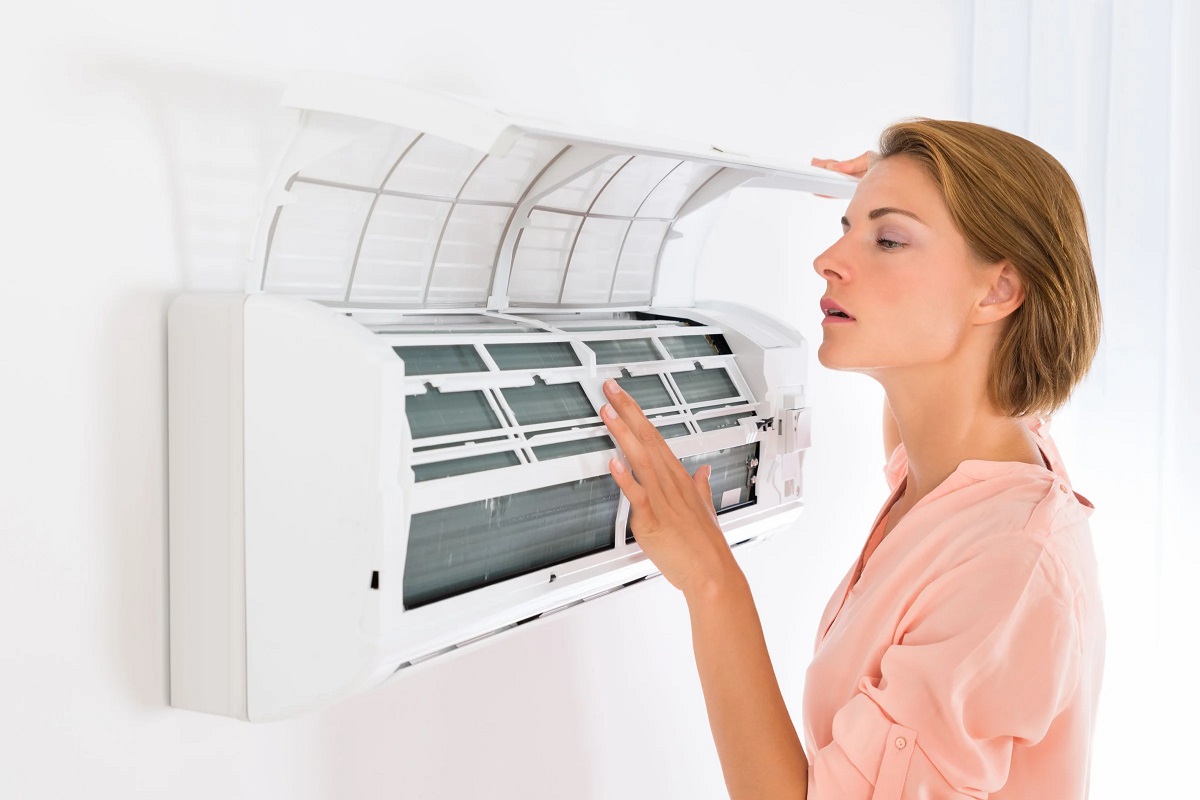
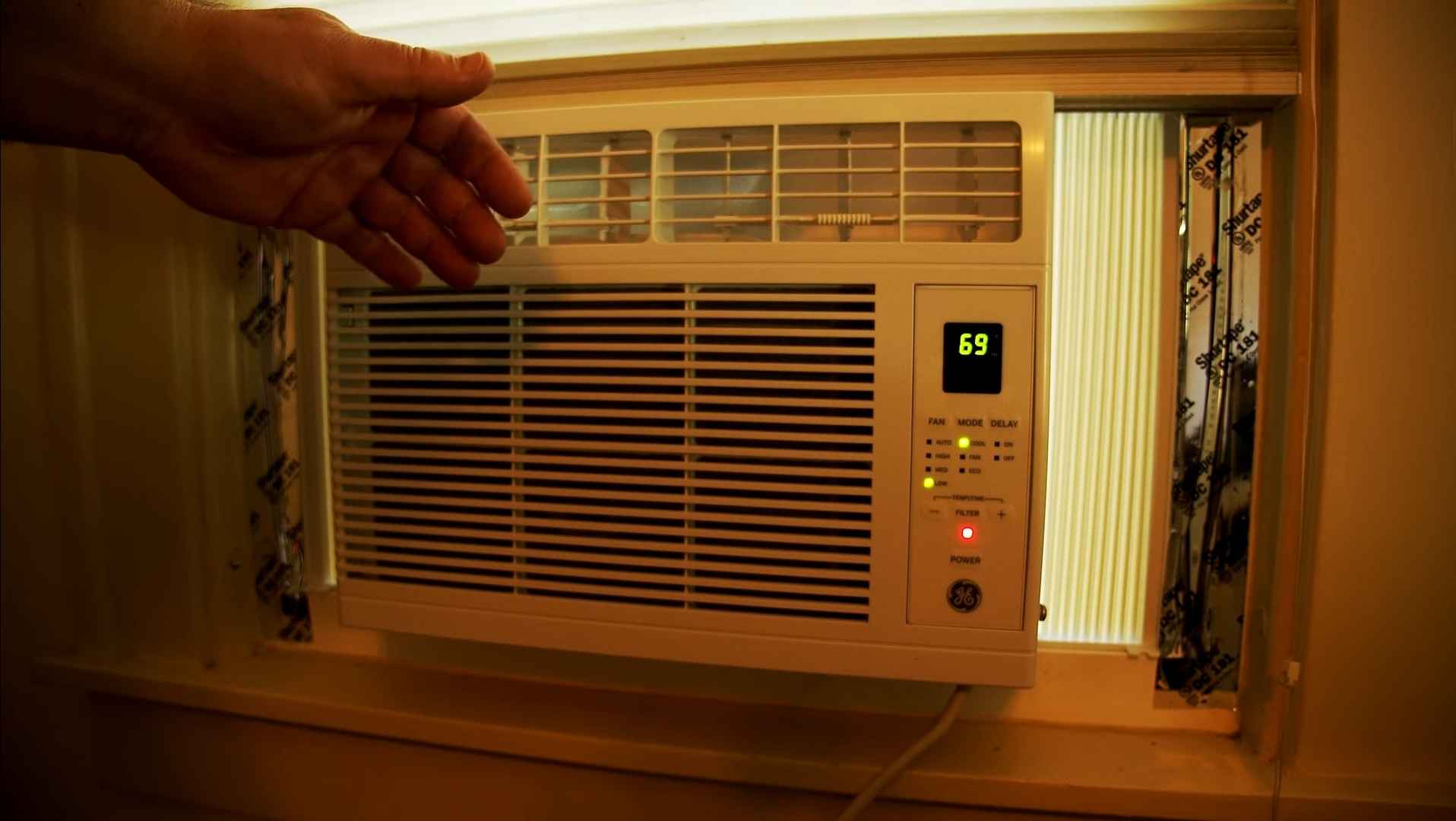
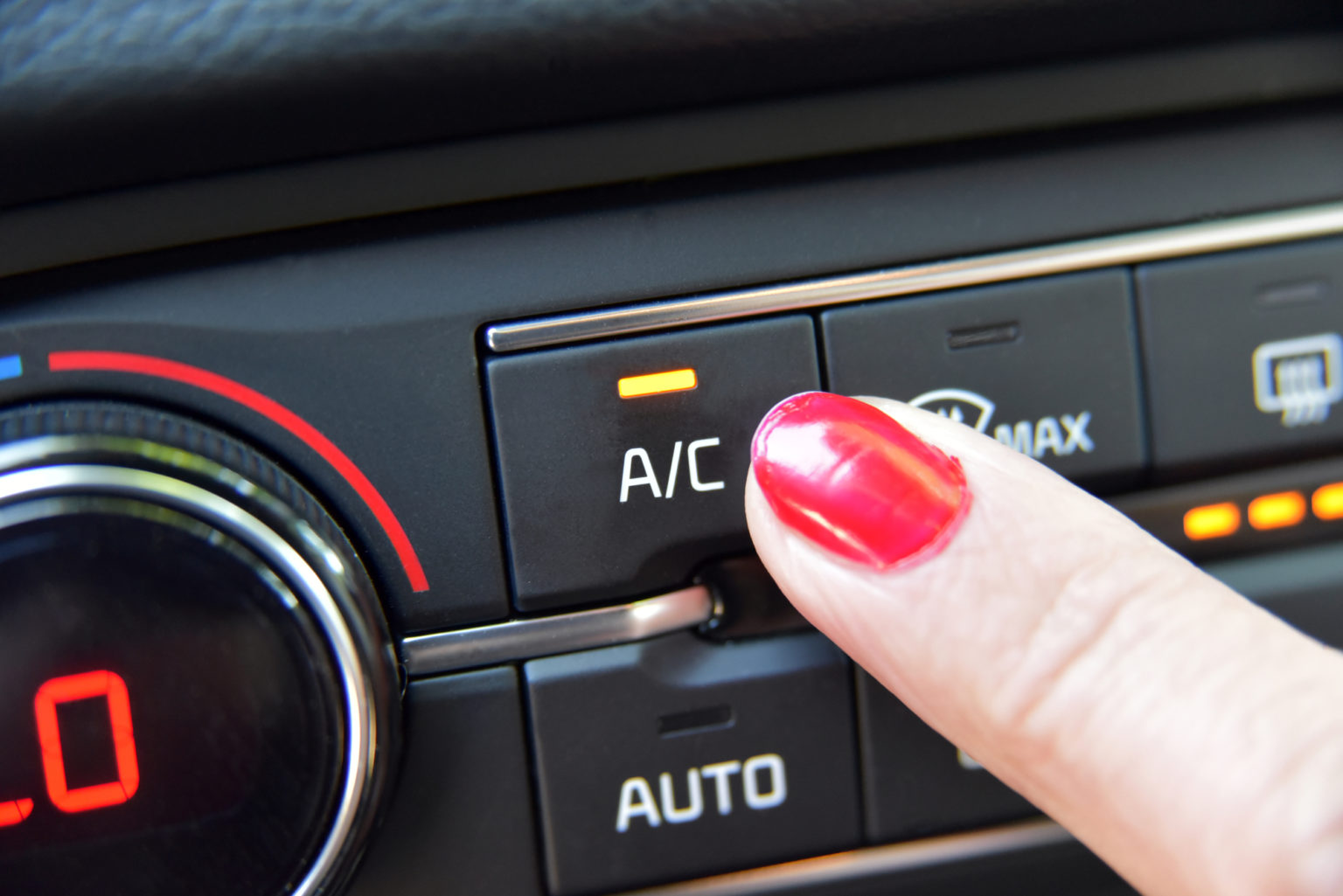




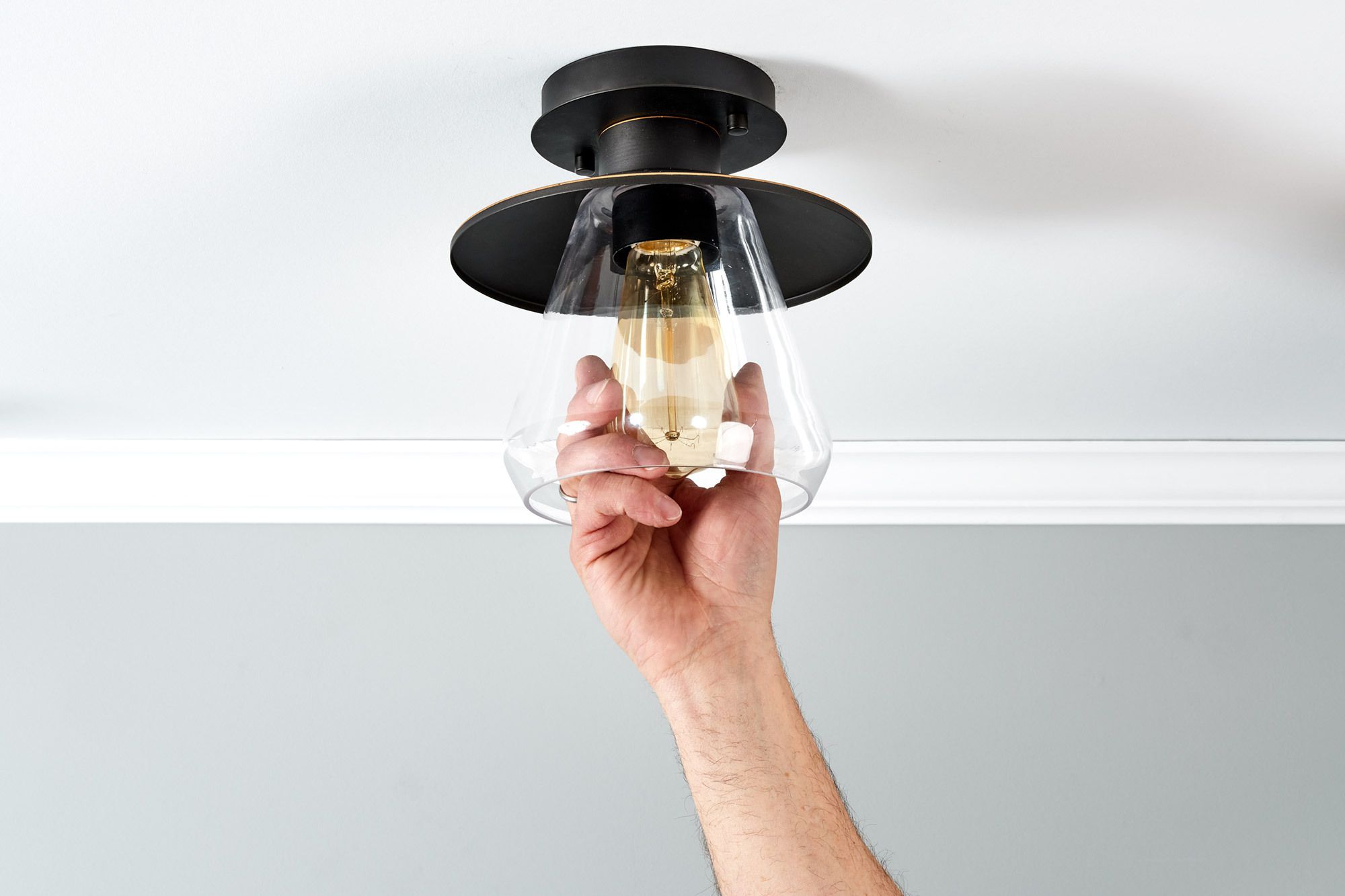



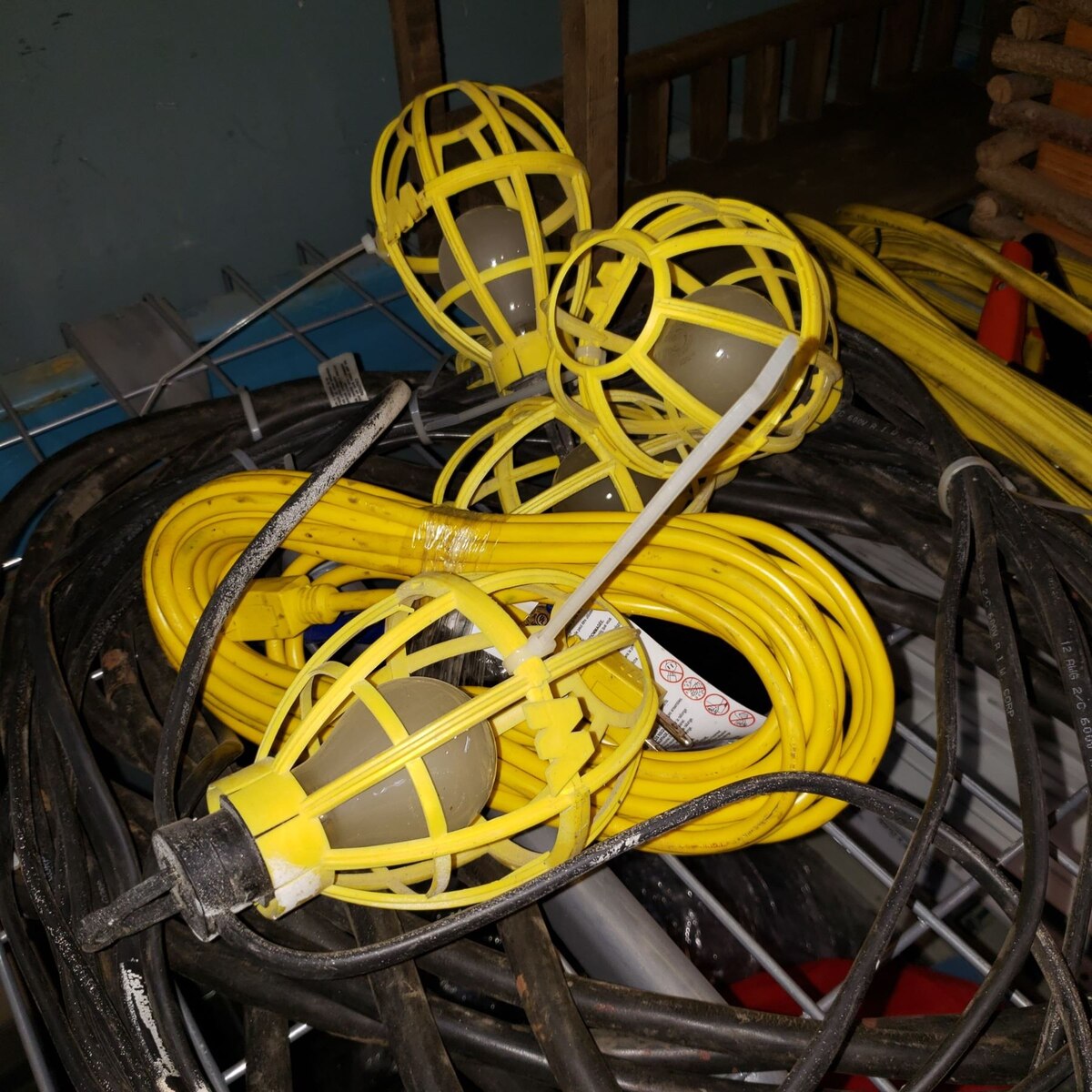

0 thoughts on “Lights Flicker When AC Turns On”